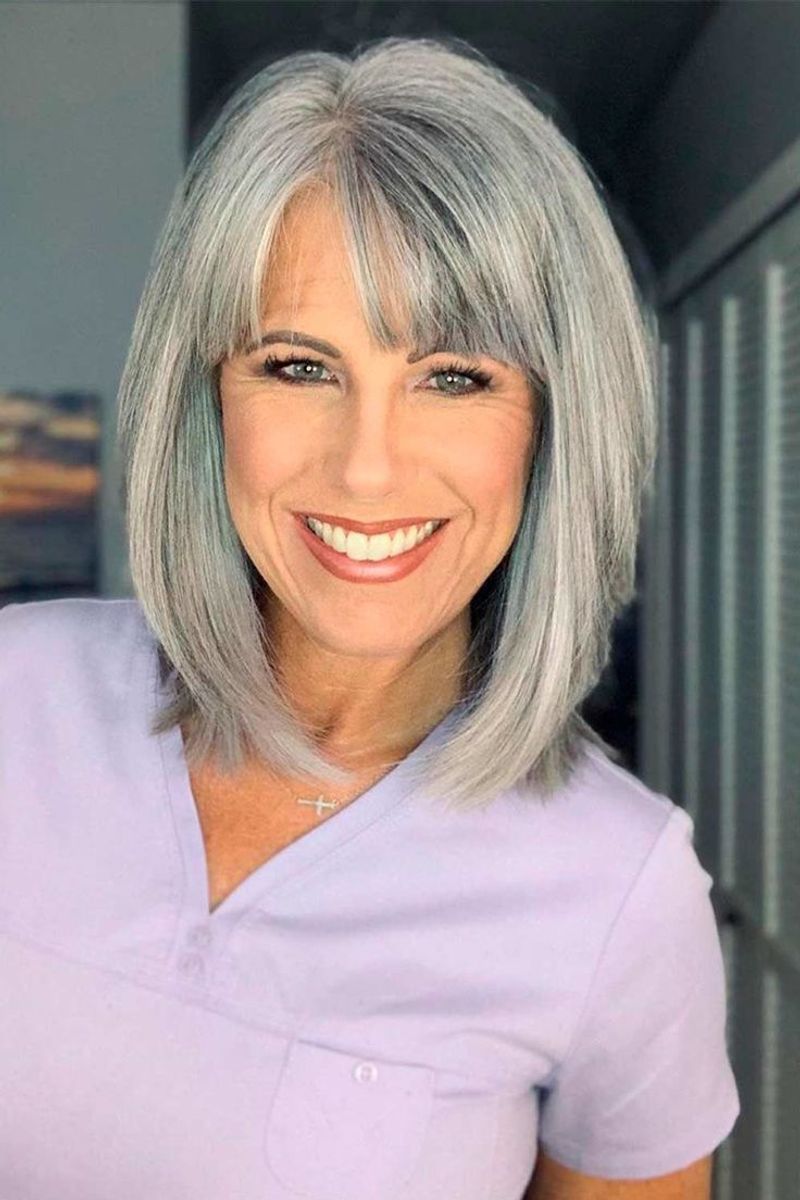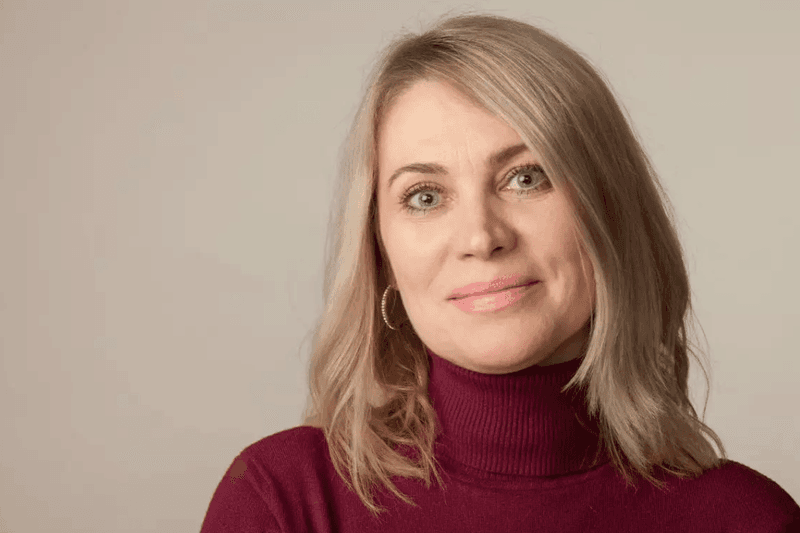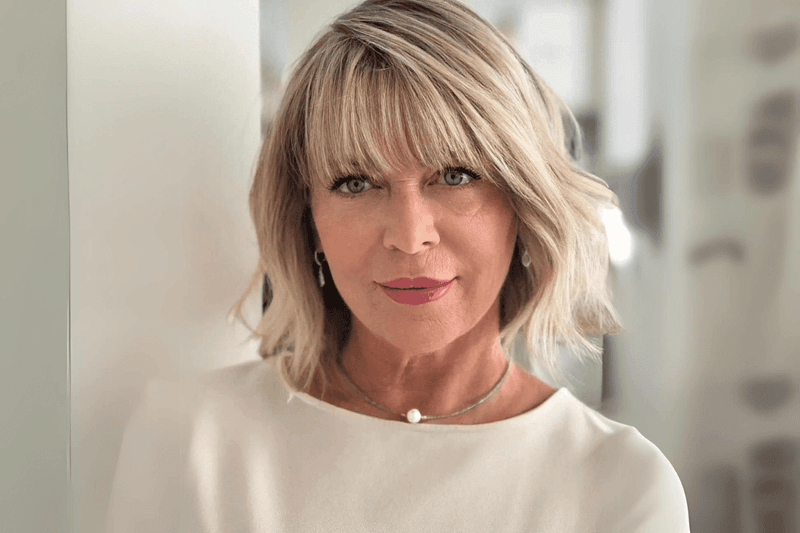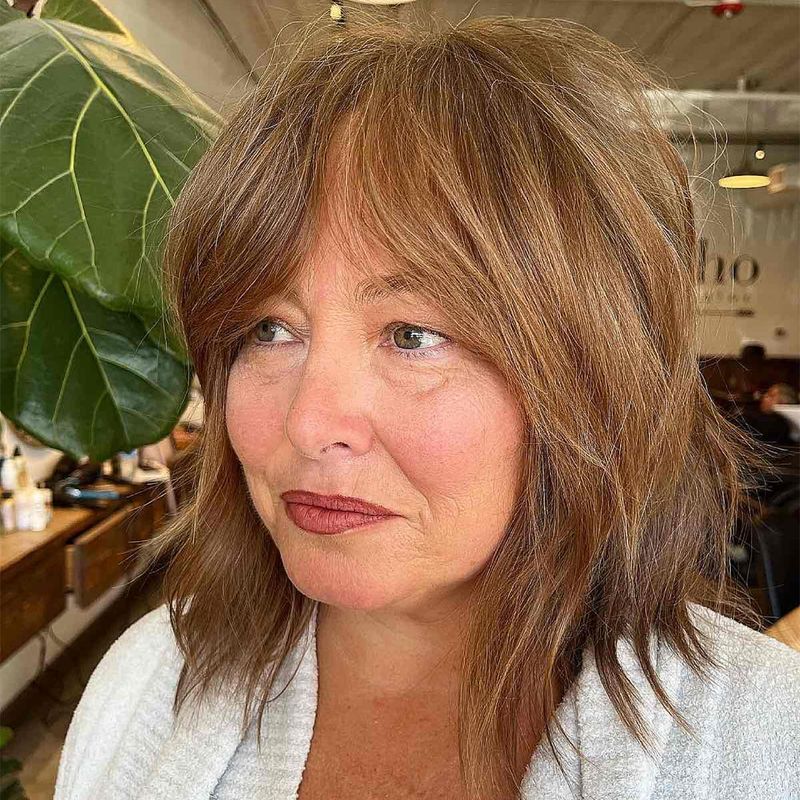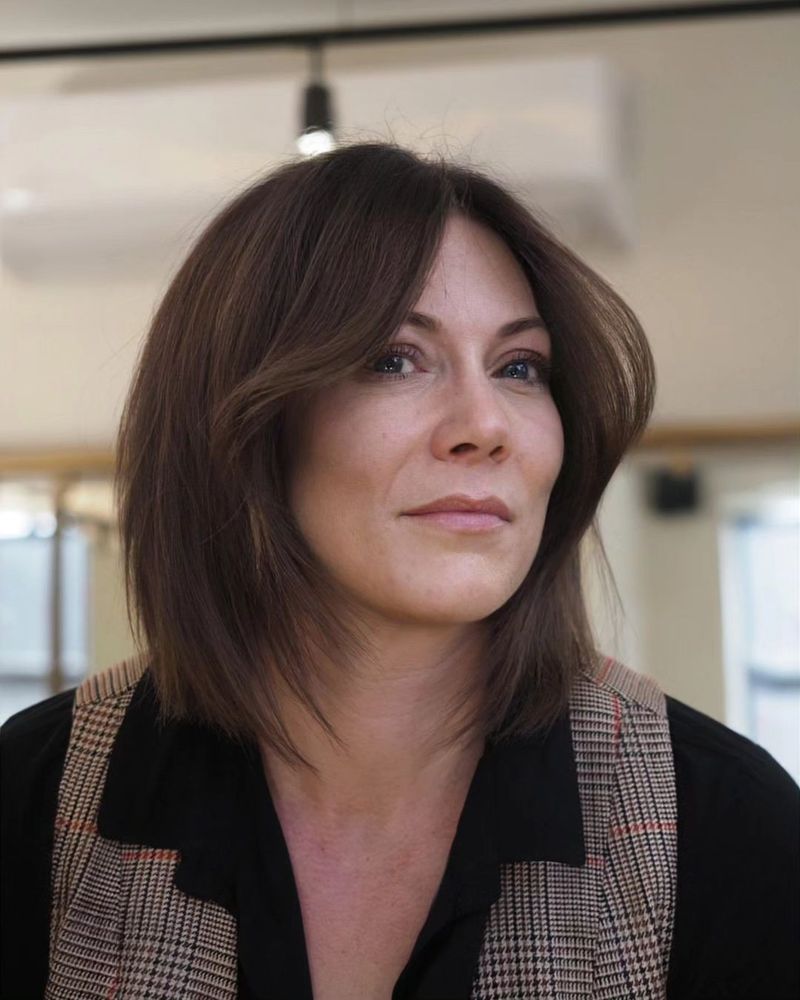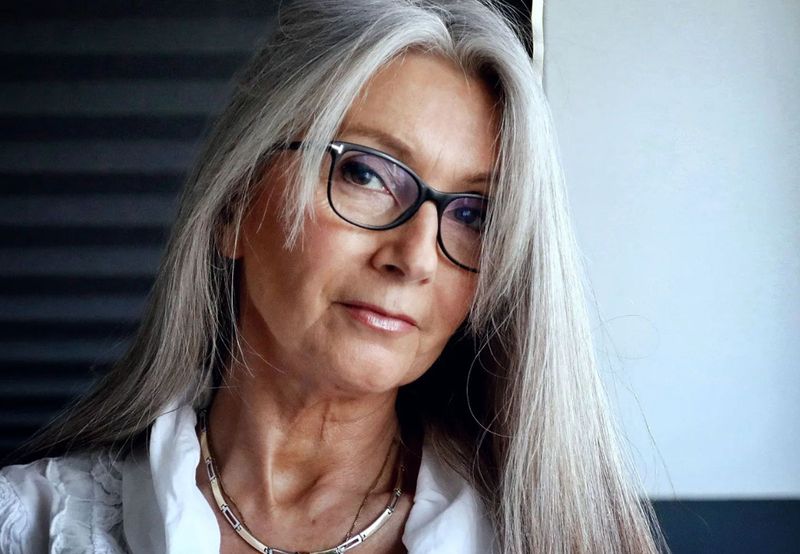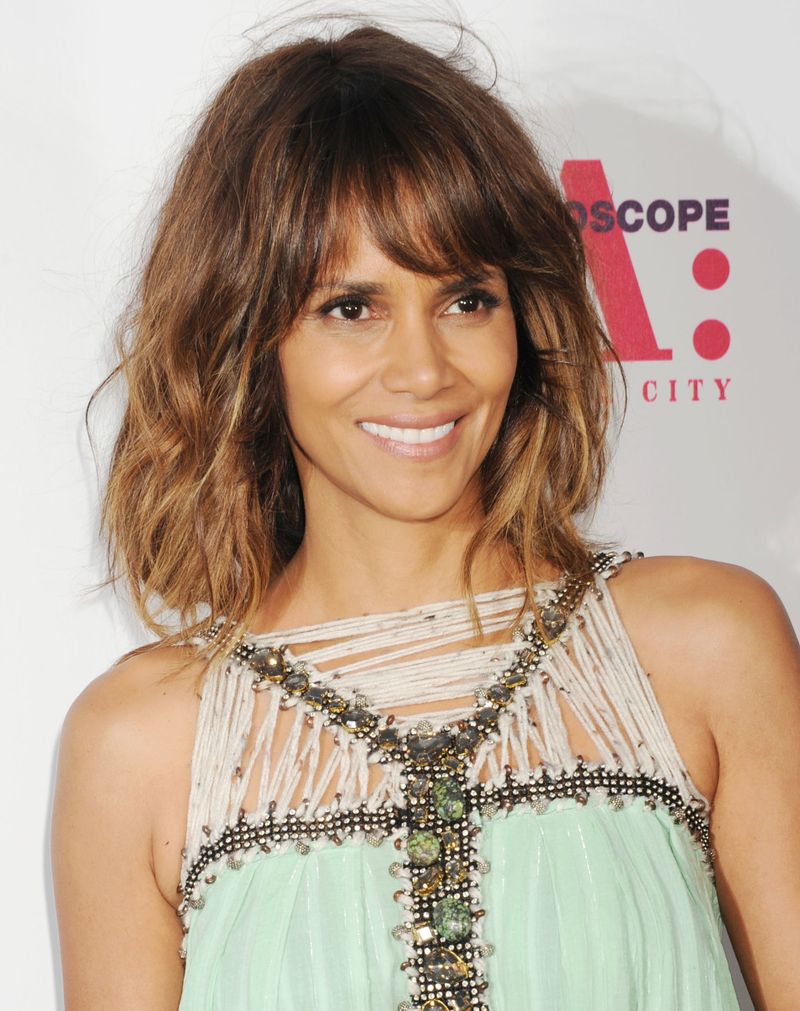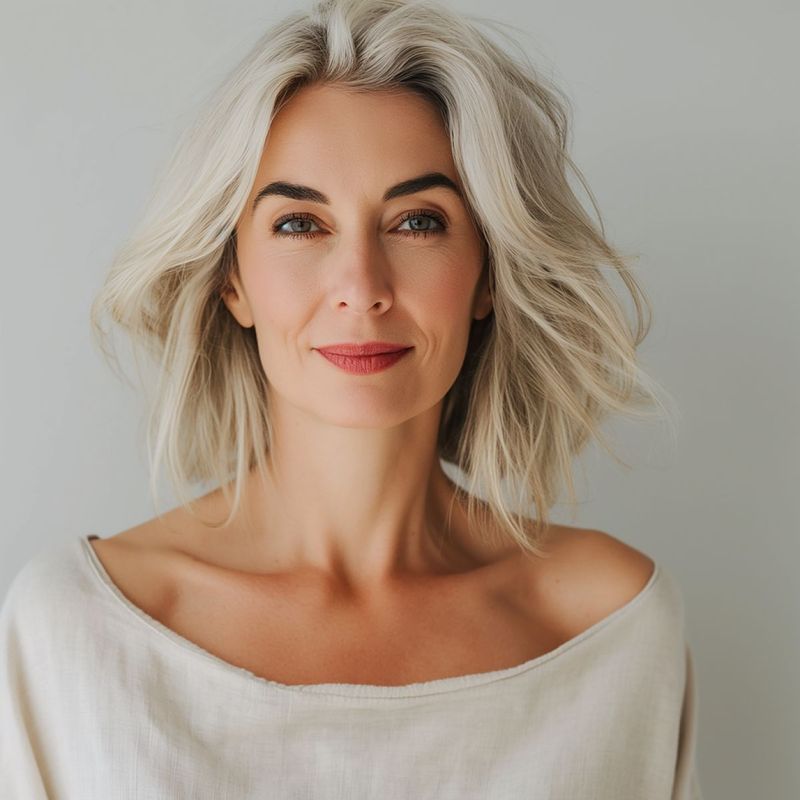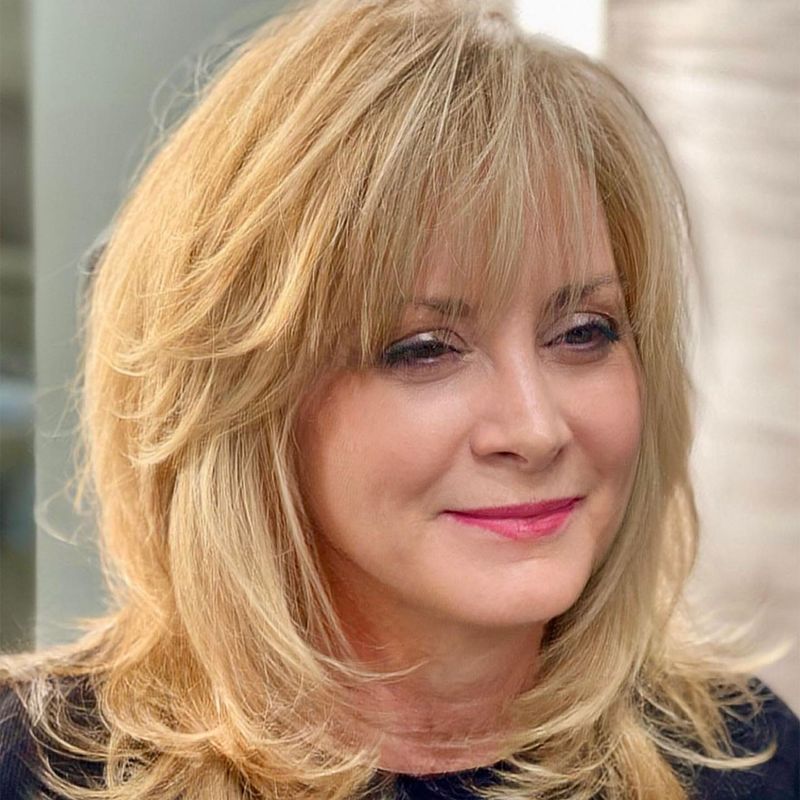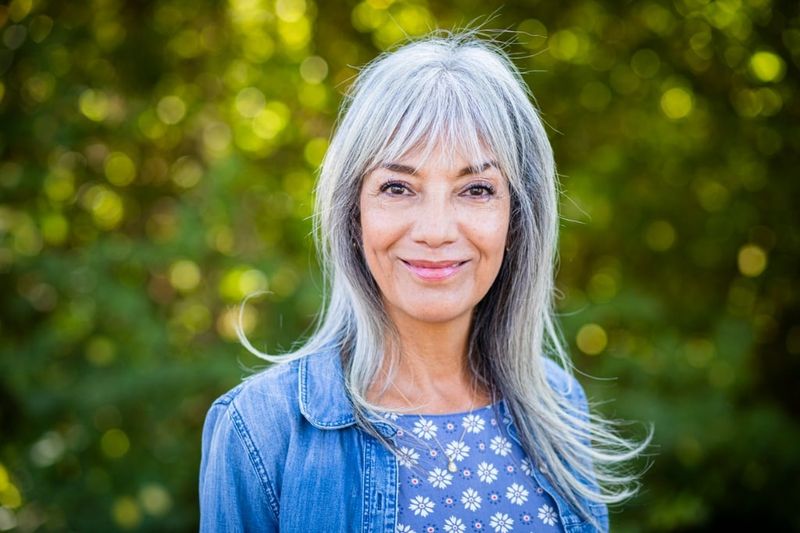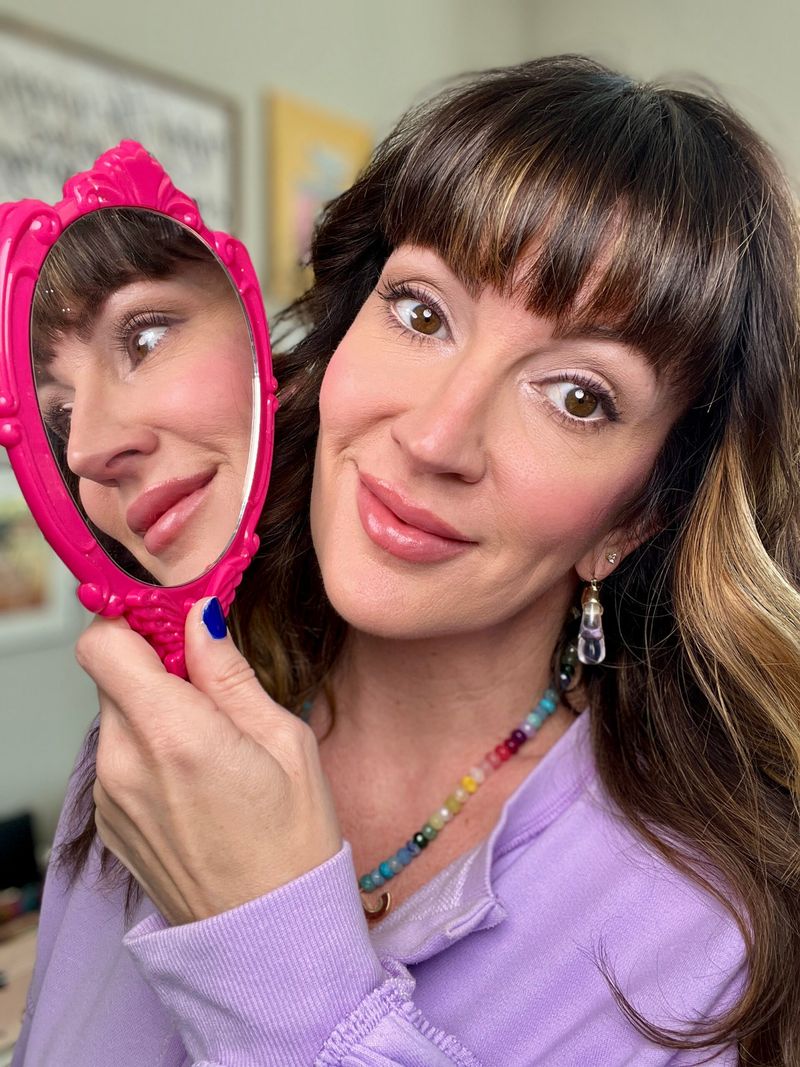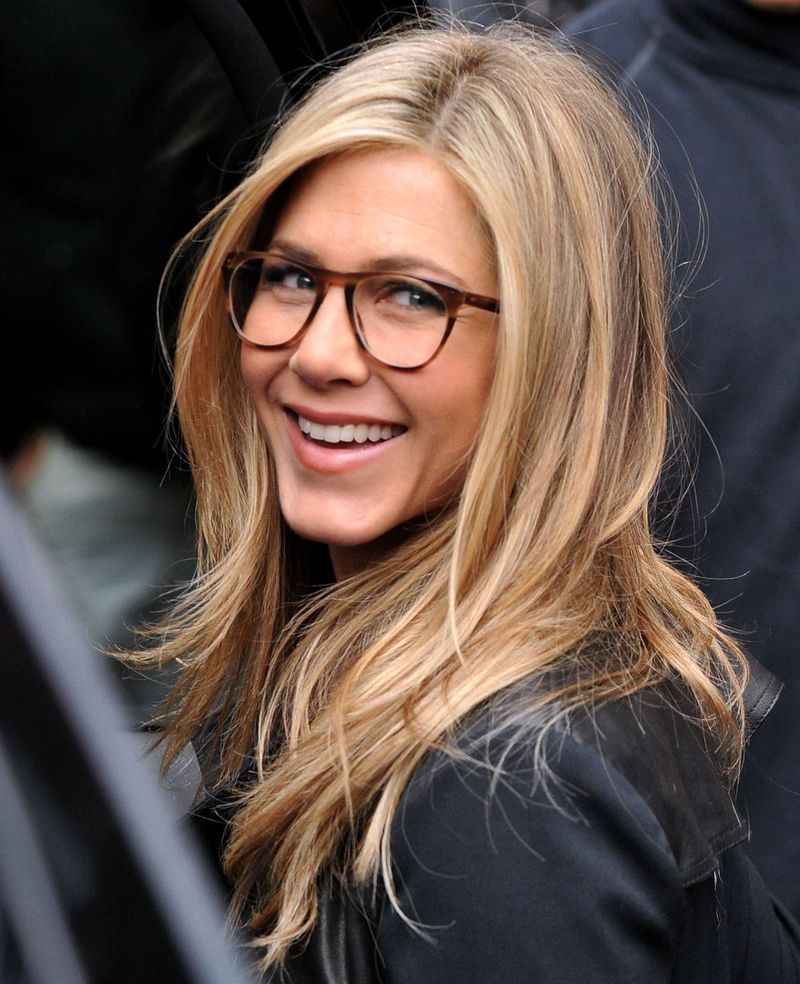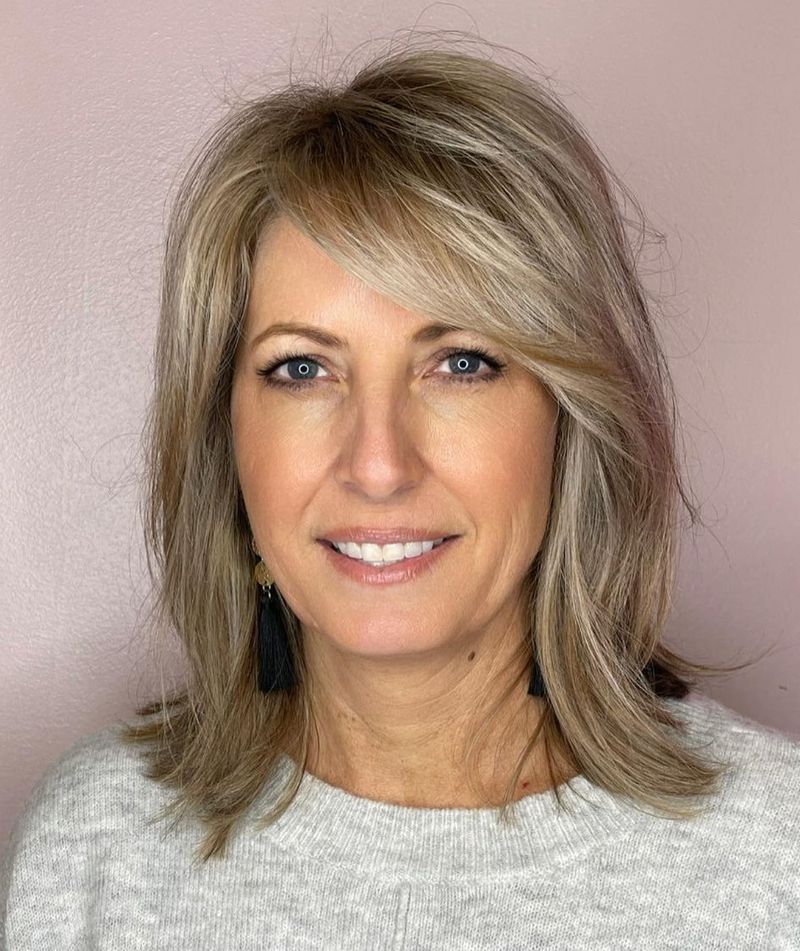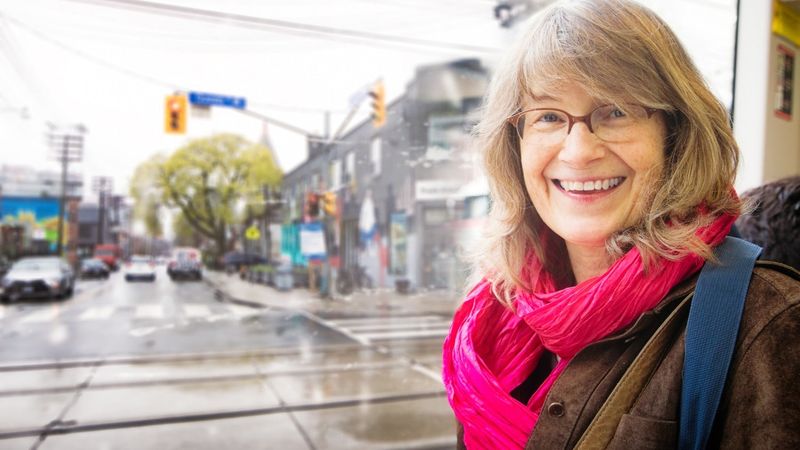Thinking about getting bangs after 50? You’re not alone! This dramatic hair change can frame your face beautifully or become your biggest regret. Many women consider bangs to refresh their look as they age, but this seemingly simple cut comes with surprising considerations. Before you head to the salon with celebrity inspiration photos, let’s explore what you should know about this transformative style decision.
1. Face Shape Matters More Than Ever
Your face shape becomes more defined with age, making it crucial when considering bangs. Round faces might benefit from side-swept styles that create angles, while longer faces can be balanced with fuller, straight-across bangs.
Bone structure that once hid behind youthful fullness now plays a starring role in how your hair frames your face. What worked in your 30s might create an entirely different effect now. Take a good look in the mirror or ask your stylist for an honest assessment before committing.
Related: -7 Straight-Hair Problems No One Talks About And 8 Easy Fixes That Shine
The right bangs for your face shape can take years off, while the wrong style might emphasize features you’d rather downplay.
2. Your Hairline Has Changed
Remember that perfect hairline from your yearbook photo? Time has likely reshaped it. Receding or uneven hairlines become more common after 50, creating unexpected challenges with bangs.
Thinning areas or cowlicks near the forehead can make bangs stand up awkwardly or reveal sparse patches. A skilled stylist can work around these issues, but only if they know what they’re dealing with.
Many women discover that modern, textured bangs work better than the blunt styles they wore in youth. These forgiving cuts can be strategically placed to camouflage hairline changes while still giving you that fresh, framed look.
3. Maintenance Requirements Increase
Gone are the days when you could roll out of bed with perfect bangs. After 50, hair texture changes mean more daily styling time. Cowlicks become more stubborn, and that natural wave might turn into unexpected kinks.
Most women find they need to blow-dry bangs immediately after showering – no air-drying unless you want them pointing in surprising directions. Regular trims every 2-3 weeks keep them from becoming a constant irritation.
Consider whether you’re willing to commit this time every morning. For some, the refreshed look is worth the extra minutes; for others, it becomes another frustrating task in an already busy morning routine.
4. Hormonal Changes Affect Your Hair
Surprise! Menopause doesn’t just bring hot flashes – it transforms your hair texture too. Many women find their once-straight locks developing unexpected waves or their curly hair becoming surprisingly straight and limp.
These hormonal shifts make bangs behave unpredictably. Hair that once held a style perfectly might now refuse to cooperate, creating daily styling challenges. Products that worked for decades suddenly seem ineffective.
Before committing to bangs, spend time getting acquainted with your hair’s new personality. Work with your current texture rather than fighting against it, and choose a bang style that complements what your hair naturally wants to do now.
5. Forehead Lines Become More Visible
Bangs create a interesting paradox with aging skin. They can hide forehead wrinkles completely, offering an instant mini-facelift effect without surgery.
This coverage alone convinces many women to make the cut! However, shorter bangs or those that separate can actually draw more attention to fine lines. The contrast between covered and exposed areas sometimes highlights rather than hides signs of aging.
Many stylists recommend longer, side-swept options that blend seamlessly with the rest of your hair. These styles offer forehead coverage while creating a soft frame that’s more forgiving than blunt, straight-across cuts that create harsh lines against mature skin.
6. They Impact Your Makeup Routine
Adding bangs changes your face’s visual proportions, requiring a complete rethink of your makeup approach. With forehead real estate covered, your eyes and cheekbones become focal points demanding more attention.
Many women find they need to emphasize their eyes more dramatically after getting bangs. That subtle eyeshadow that worked before might disappear now, while bolder brow definition becomes essential to frame what’s visible.
Experiment with your makeup before the big cut. Try simulating bangs by arranging your hair forward, then notice which features need enhancing. This preview helps avoid that post-cut panic when your familiar makeup routine suddenly looks all wrong.
7. Gray Hair Requires Special Consideration
Embracing your silver strands? Bangs interact differently with gray hair. The distinct texture of gray hair – often wirier and more resistant – can make bangs particularly challenging to manage, especially in humidity.
Gray bangs also show styling product more obviously than pigmented hair. That shine spray or smoothing serum might leave a noticeable residue that’s more apparent against silver strands.
Many women find that slightly longer, piece-y bangs work best with gray hair, allowing for movement while minimizing styling struggles. Bonus tip: purple-tinted products designed specifically for gray hair keep bangs from developing that yellowish tinge that can age your look.
8. Consider Your Lifestyle Honestly
Morning swim sessions, hot yoga classes, or regular gym workouts create special challenges for bang-wearers. Sweat and bangs are notorious enemies, turning your carefully styled fringe into a separated, stringy mess within minutes.
Active women often find themselves carrying emergency styling tools – mini flat irons, dry shampoo, headbands – to manage mid-day bang disasters. The question becomes whether you’re willing to add these extra steps to your routine.
Some women solve this by choosing longer, side-swept styles that can be pinned back during activities. Others embrace workout-friendly headbands or scarves. The key is matching your bang style to your real life, not the idealized version where you always have time to style.
9. The Psychological Factor
Getting bangs after 50 often signals something deeper than a simple style change. Psychologists note that dramatic hair transformations frequently coincide with major life transitions – retirement, divorce, empty nesting, or simply feeling invisible in a youth-obsessed culture. Understanding your true motivation helps set realistic expectations. If you’re seeking external validation or hoping bangs will solve deeper insecurities, you might be disappointed with the results, no matter how flattering the cut. Ask yourself honestly: Am I choosing bangs because they truly suit me, or am I looking for a change that might better come from elsewhere? Sometimes a fresh haircut is exactly what you need – and sometimes it’s just a distraction.
10. Your Hair’s Density Has Changed
That thick mane you flaunted in your yearbook photos has likely changed significantly. After 50, most women experience some degree of hair thinning, making traditional heavy bangs potentially problematic.
Thinning hair requires strategic cutting to create the illusion of fullness. Wispy, sparse bangs can age your appearance rather than refresh it. Skilled stylists can create bangs that maximize your current hair density through layering and texturizing techniques.
Many women discover that curtain bangs or side-swept styles offer more versatility with less density. These styles require fewer hairs to create impact, unlike blunt, straight-across bangs that demand substantial thickness to look intentional rather than sparse.
11. They Require Professional Cutting
Those impulsive bathroom bang-cutting sessions rarely end well, especially after 50. DIY bangs might have been charming in college, but mature hair requires professional precision to avoid disaster.
A skilled stylist considers multiple factors invisible to the untrained eye – your cowlicks, growth patterns, and how your hair naturally falls. They’ll also recommend the right length and style for your face shape and lifestyle. Budget for regular maintenance trims every 3-4 weeks.
Even the best-cut bangs grow quickly, transforming from perfectly framing your eyes to poking them in less than a month. This ongoing commitment represents both time and money that should factor into your decision.
12. They Can Reveal Aging Eyes
While bangs might hide forehead wrinkles, they draw immediate attention to your eyes. This spotlight effect can highlight crepey eyelids, crow’s feet, and under-eye circles that were previously balanced by your forehead in the visual hierarchy of your face.
Many women find they need to update their eye makeup routine after getting bangs. Techniques that lift and brighten the eye area become essential, as does addressing any under-eye darkness that suddenly seems more prominent.
Consider whether you’re prepared for this shift in focus. If your eyes are your favorite feature, bangs might beautifully showcase them. If you’re self-conscious about eye-area aging, you might want to experiment with makeup techniques before committing to the cut.
13. The Glasses Equation
Eyeglasses and bangs create a complex relationship that deserves special consideration. The wrong combination can leave you with obscured vision, constant adjustments, or bangs that flip awkwardly over frames.
Heavier frames generally pair better with side-swept styles that clear the eyeline. Lighter frames or frameless glasses offer more flexibility with bang length and style. Consider bringing your everyday glasses to your hair consultation.
Many women find that slightly shorter bangs that clear the frames entirely or longer ones that can tuck behind glasses work best. The middle ground – where bangs constantly brush against lenses – creates the most frustration and smudged glasses.
14. The Growing-Out Phase Is Challenging
Commitment-phobes beware: growing out bangs requires patience and creativity. That impulsive cut might bring weeks of delight followed by months of awkward transitions as you try to blend them back into your style. The grow-out phase hits differently after 50.
Hair grows more slowly, and those transitional styles that worked in your youth might look messy rather than carefree now. Many women find themselves stuck wearing headbands or clips for months longer than expected. Before cutting, honestly assess your tolerance for this inevitable future phase.
Have a stylist suggest transitional styles for different stages of growth. If you’ve struggled with growing out bangs before, remember that experience – it will likely be even more challenging this time.
15. Weather and Climate Considerations
Your local climate might be the deciding factor in your bang success story. High humidity transforms many types of bangs into frizzy disasters, while extremely dry conditions can make them flat and staticky.
Women in humid environments often discover that their carefully straightened bangs revert to unexpected curls or waves within minutes of stepping outside. Conversely, winter dryness and hat-wearing create their own challenges with static and flatness. Consider your local weather patterns and how they might affect daily styling.
Those living in challenging climates might need specialized products or techniques to maintain their look. Some women even keep seasonal hairstyles, embracing bangs during favorable weather months and growing them out when conditions turn hostile.


